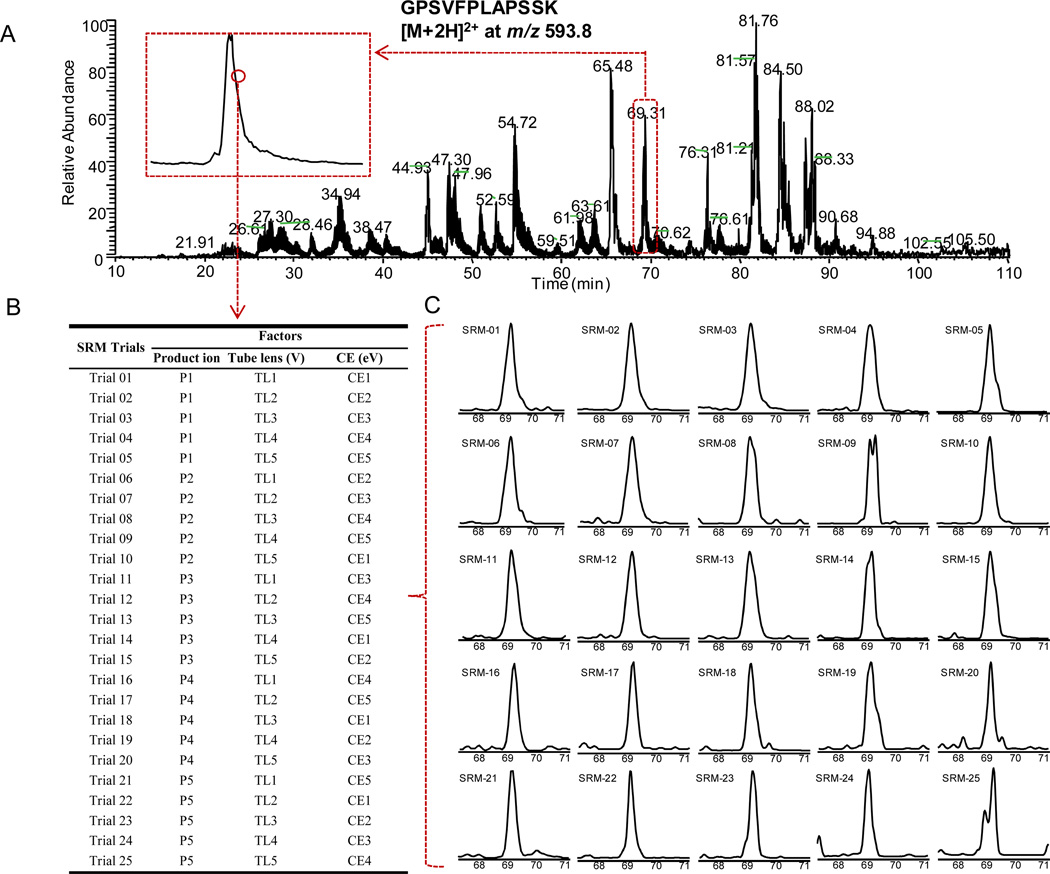Figure 1.
The illustration of the on-the-fly OAO strategy. (A) Total ion chromatogram (TIC) of all SRM trials for cT84.66 spiked-in mouse plasma digest separated by the nano-LC system. Time scheduled SRM was applied. In total, 875 SRM transitions corresponding to 19 peptide candidates for cT84.66 were monitored with a 150-min gradient. The full list of candidate peptides and the product ions used for SRM transitions is presented in Table 1. The insert depicts the zoomed-in profile of a typical peptide peak (doubly-charged GPSVFPLAPSSK). Each point on the profile represented one independent optimization cycle consisting of 25 trials. (B) The orthogonal array design (L25) for simultaneous optimization of key factors in SRM development. The numbers 1–5 in the table denote the five different levels for each factor. (C) A typical set of the chromatograms of 25 SRM trials conducted sequentially (took 50 ms each) acquired each data point. The XIC peak was used to evaluate the S/N for each trial.

